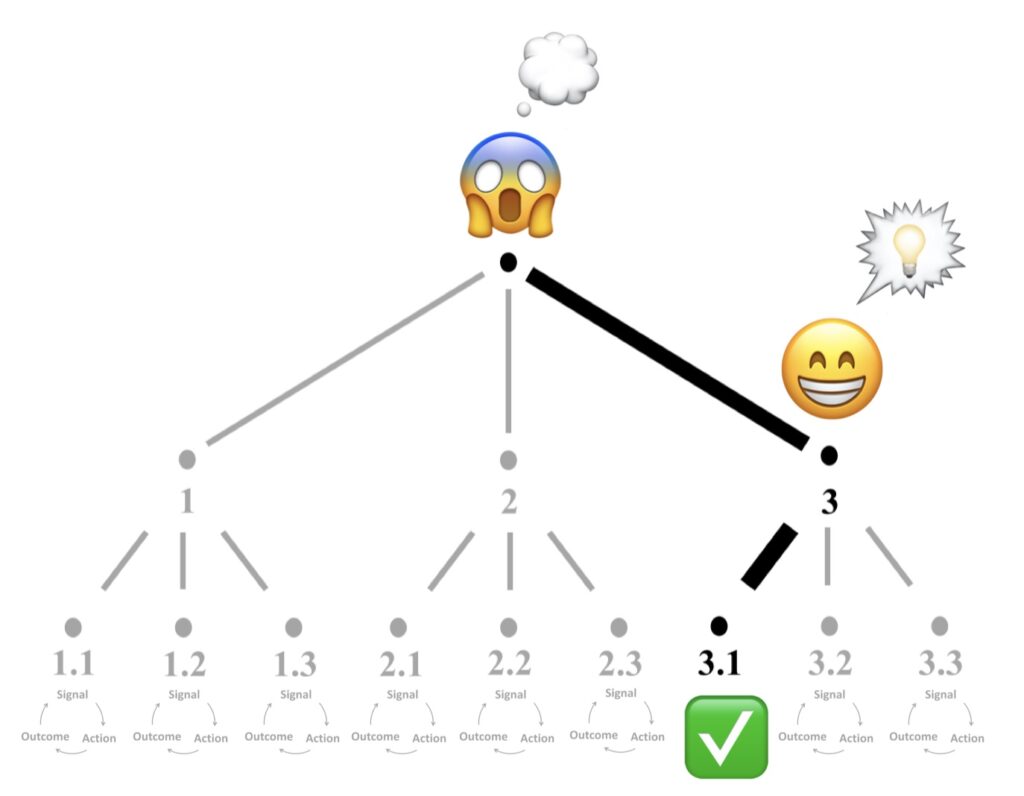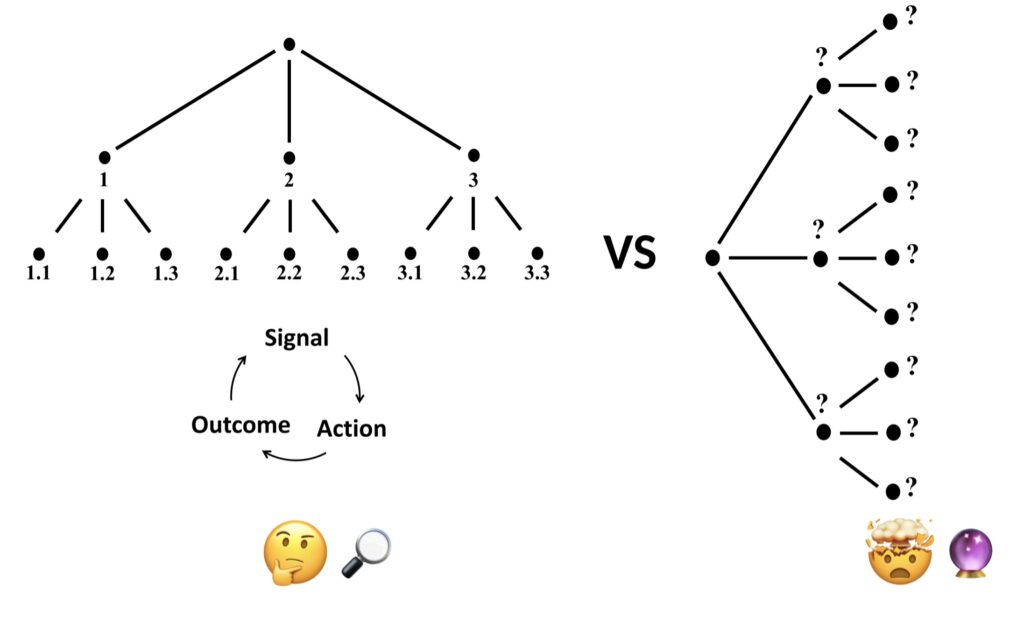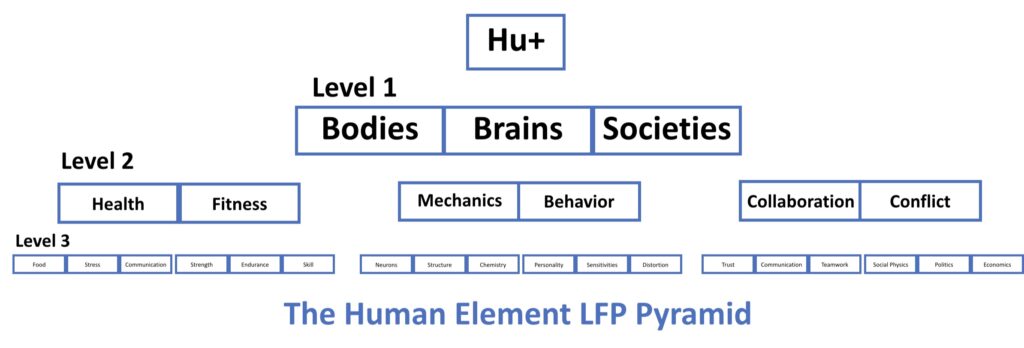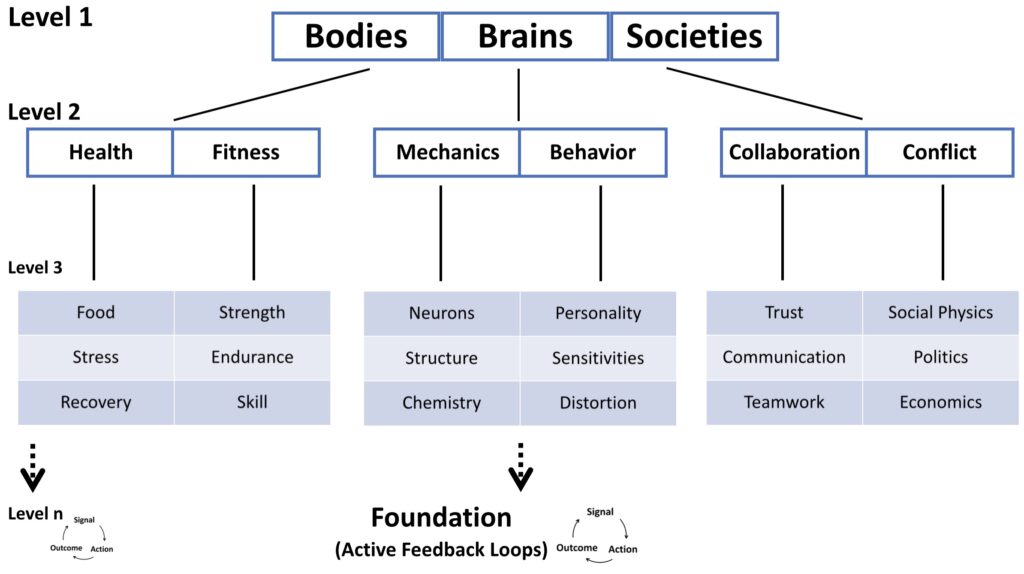Getting from “Oh no!” to “Aha!” to “Done!”

“To attain knowledge, add things every day. To attain wisdom, remove things everyday.”
-Lao Tzu
The Rules:
1) Define Terms
2) Make Choices
The LFP system is designed for one purpose: to link information to action to outcome under pressure.
Knowledge, wisdom and skill are all different things:

- Knowledge is an understanding of how information links together.
- Wisdom is an understanding of what information is relevant to a specific context.
- Skill is the ability to link a signal to an action in time to produce an intended outcome.
Deciding on an action is context dependent.
The process of building a framework and then making conscious decisions about how you are going to link together your beliefs is what makes a LFP pyramid useful. It’s deceptively simple and remarkably powerful.
A common approach to a complex, uncertain future is to try and predict a range of different possibilities:

LFP is a fundamentally different approach.
Time is spent:
- Identifying useful signals.
- Identifying actions where a little effort can dramatically influence a system (i.e. leverage).
- Understanding the relationships between signals, actions and outcomes within systems.
The pyramid structure is intentional and a critical part of LFP.
- It starts with a single entry point.
- The pyramid branches down to a foundation of feedback loops.
- Each branch point has a maximum of three branches.
Improving your pyramid as you learn is where the choices come in.
It takes work to define terms and then choose where they go in the structure.
The definitions and choices are critical pieces of the process. The constraints of definitions and choices are where the practical learning takes place.
The definitions and choices are a way to learn for performance, to learn with the intent of linking specific information to specific actions to generate specific outcomes.
Here are the first three levels of the framework I’ve been using for learning about how our bodies work, how we think and how we relate to each other:

Here’s a little different view of the same information to make it easier to read:

Circling back to where we started, the purpose of the LFP Pyramid is to link information to action to outcome under pressure.
The picture above is just the top three layers of the LFP pyramid I use.
As an example, level 4 for “food” branches to digestion, inflammation and energy. I’m sensitive to the signals I’ll get from eating specific things like sugar and seed oils. I eat 2-3 times a day every day so I’ve got active feedback loops linking the foods I eat to how they impact digestion, inflammation and energy.
Just like your reaction to specific foods will be different than mine, the terms you use for your LFP pyramid will probably be different than the terms I chose.
Spending time building a framework which ties broad but vague terms like “health” or “fitness” or “politics” or “economics” with specific signals linked to specific actions and outcomes is how a LFP pyramid will help you get from “Oh no!” to “Aha!” to “Done!”
Thanks for reading. You can find out more about my background: here.
If this approach resonates with you, I highly recommend two books:
The Art of the Long View by Peter Schwartz, which provides a practical, easy to follow, step-by-step process for strategic planning within complex systems.
Thinking in Systems: A Primer by Donella Meadows is by far the best book I’ve found on systems thinking.
